I've started working with FPGAs and VHDL In Model Sim everthing works and does what it has to do, but if I want to compile it in Quartus the error shows up.
library ieee;
use ieee.std_logic_1164.all;
entity fpga_aufgabe1 is
end entity;
architecture arch of fpga_aufgabe1 is
signal s : std_logic_vector(2 downto 0);
signal a : std_logic_vector(6 downto 0);
signal b : std_logic_vector(6 downto 0);
signal c : std_logic_vector(6 downto 0);
signal ar : std_logic_vector(6 downto 0);
signal al : std_logic_vector(6 downto 0);
signal br : std_logic_vector(6 downto 0);
signal bl : std_logic_vector(6 downto 0);
signal cr : std_logic_vector(6 downto 0);
signal cl : std_logic_vector(6 downto 0);
signal a_high : std_logic_vector(3 downto 0);
signal a_low : std_logic_vector(3 downto 0);
signal b_high : std_logic_vector(3 downto 0);
signal b_low : std_logic_vector(3 downto 0);
signal c_high : std_logic_vector(3 downto 0);
signal c_low : std_logic_vector(3 downto 0);
begin
a_high <= '0' & a(6 downto 4);
a_low <= a(3 downto 0);
b_high <= '0' & b(6 downto 4);
b_low <= b(3 downto 0);
c_high <= '0' & c(6 downto 4);
c_low <= c(3 downto 0);
dekoder_ina1: entity work.fpga_ssd(arch)
port map (a_low,ar);
dekoder_ina2: entity work.fpga_ssd(arch)
port map (a_high,al);
dekoder_inb1: entity work.fpga_ssd(arch)
port map (b_low,br);
dekoder_inb2: entity work.fpga_ssd(arch)
port map (b_high,bl);
alu: entity work.fpga_ALU(arch)
port map (s,a,b,c);
dekoder_out1: entity work.fpga_ssd(arch)
port map (c_low,cr);
dekoder_out2: entity work.fpga_ssd(arch)
port map (c_high,cl);
end arch;
library ieee;
use ieee.std_logic_1164.all;
entity fpga_ssd is
port(
g: in std_logic_vector(3 downto 0);
y: out std_logic_vector(6 downto 0) );
end fpga_ssd;
architecture arch of fpga_ssd is
-- signal zero: std_logic_vector(6 downto 0) := "1111110";
-- signal one: std_logic_vector(6 downto 0) := "0110000";
-- signal two: std_logic_vector(6 downto 0) := "1101101";
-- signal three: std_logic_vector(6 downto 0) := "1111001";
-- signal four: std_logic_vector(6 downto 0) := "0110011";
-- signal five: std_logic_vector(6 downto 0) := "1011011";
-- signal six: std_logic_vector(6 downto 0) := "1011111";
-- signal seven: std_logic_vector(6 downto 0) := "1110000";
-- signal eight: std_logic_vector(6 downto 0) := "1111111";
-- signal nine: std_logic_vector(6 downto 0) := "1111011";
-- signal a: std_logic_vector(6 downto 0) := "1110111";
-- signal b: std_logic_vector(6 downto 0) := "0011111";
-- signal c: std_logic_vector(6 downto 0) := "1001110";
-- signal d: std_logic_vector(6 downto 0) := "0111101";
-- signal e: std_logic_vector(6 downto 0) := "1001111";
-- signal f: std_logic_vector(6 downto 0) := "1000111";
-- signal err: std_logic_vector(6 downto 0) := "1001001";
begin
with g select
y <= "0000001" when "0000",
"1001111" when "0001",
"0010010" when "0010",
"0000110" when "0011",
"1001100" when "0100",
"0100100" when "0101",
"0100000" when "0110",
"0001111" when "0111",
"0000000" when "1000",
"0000100" when "1001",
"0001000" when "1010",
"1100000" when "1011",
"0110001" when "1100",
"1000010" when "1101",
"0110000" when "1110",
"0111000" when "1111",
"0110110" when others;
end arch;
library ieee;
use ieee.std_logic_1164.all;
use ieee.numeric_std.all;
entity fpga_ALU is
port(
s: in std_logic_vector(2 downto 0);
a: in std_logic_vector(6 downto 0);
b: in std_logic_vector(6 downto 0);
c: out std_logic_vector(6 downto 0) );
end fpga_ALU;
architecture arch of fpga_ALU is
signal a_int: unsigned(6 downto 0);
signal b_int: unsigned(6 downto 0);
signal shift: std_logic_vector(6 downto 0);
signal agb: std_logic_vector(6 downto 0) := "0000000";
signal aeb: std_logic_vector(6 downto 0) := "0000000";
signal inca: std_logic_vector(6 downto 0);
signal add: std_logic_vector(6 downto 0);
signal modulo: std_logic_vector(6 downto 0);
signal und: std_logic;
signal oder: std_logic;
signal agb_b: boolean;
signal aeb_b: boolean;
begin
-- Berechnung
a_int <= unsigned(a);
b_int <= unsigned(b);
agb_b <= a_int > b_int;
aeb_b <= std_match(a, b);
inca <= std_logic_vector(a_int+1);
add <= std_logic_vector(a_int+b_int);
und <= a(0) and b(0);
oder <= a(0) or b(0);
shift <= std_logic_vector(shift_left(b_int,3));
modulo <= std_logic_vector(a_int mod b_int);
--Wertzuweisung potenzieller c's
agb <= "0000001" when agb_b = true;
aeb <= "0000001" when aeb_b = true;
with s select
c <= agb when "000",
aeb when "001",
inca when "010",
add when "011",
"000000" & und when "100",
"000000" & oder when "101",
shift when "110",
modulo when "111",
"1111111" when others;
end arch;
The file are all named correctly. Altera Quartus II "Error (12061): Can't synthesize current design -- Top partition does not contain any logic" here it says something about a entity named correctly but I am not quite sure what exactly it is.
